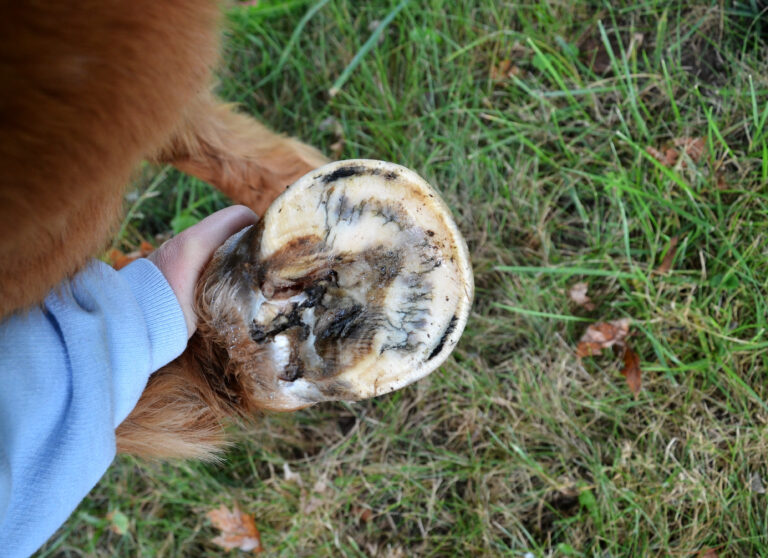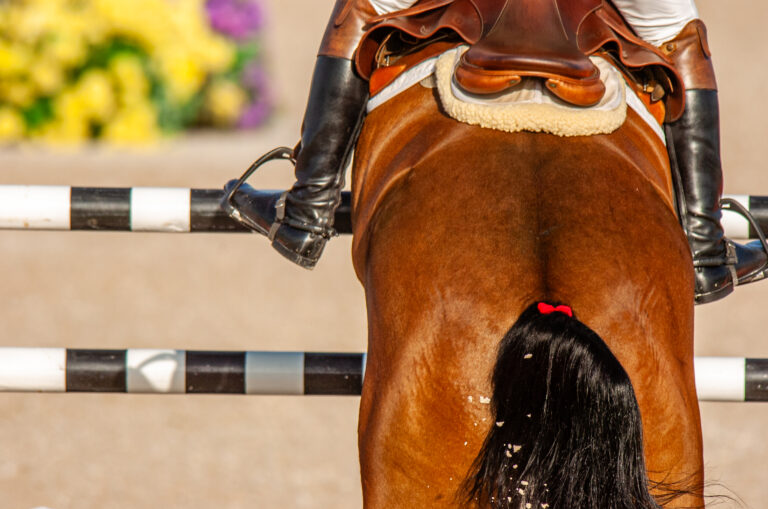 Treats that are more liquid than solid—for example, applesauce or Karo Syrup—can be delivered with medication in a dose syringe to make it more palatable. | © Dusty Perin
Treats that are more liquid than solid—for example, applesauce or Karo Syrup—can be delivered with medication in a dose syringe to make it more palatable. | © Dusty PerinEven the healthiest horse needs oral medication from time to time to treat a minor infection or illness. Getting bitter pills, powder or paste into the belly of a resistant 1,000-pound animal can be tricky, but it’s important that your horse consume the full amount of each dose to ensure that the medication works properly. Here are some tips to help make that happen.
Three Methods to Consider
1. Feed by hand—If your horse is medicated daily with small pills, I recommend hand-feeding them in a palmful of grain or with a suitable treat (you’ll find advice on what to choose below). Some tablets are the size of Tic Tacs and dissolve easily. They could quickly be lost if thrown in a feed tub.
2. Mix with feed—If the medication is a larger pill or powder, mix it with your horse’s daily ration, but be careful that it doesn’t sift to the bottom of the feed tub. If he’s not too picky, wet the feed or turn it into mash so he receives the full dose and it doesn’t just coat the bucket. Consider, too, how he usually eats from his feed tub. Does he flip his bucket or feed pan or use his nose to shovel feed out of the tub so he can eat it off the floor? If that’s the case, he may not consume some or any of his medication.
3. Use a dose syringe—To eliminate any doubt that your horse receives the full measure of his medicine, use an oral dose syringe to dispense it onto the back of his tongue as if you were administering dewormer. The only drawback is equine tolerance. While some horses can be approached day in and day out, others become 27 hands tall when they see you coming with a syringe. Your mild-mannered gelding can become downright dangerous, perhaps rearing, striking and even throwing himself (and you) around.
Sweeten the Pot
Whichever method you choose, mixing your horse’s medication with a treat can increase his cooperation. Favorites include carrots, apples, applesauce, baby-food carrot puree, bread, dark molasses, Karo Syrup and Jell-O powder. A treat that is more liquid than solid—for example, applesauce or Karo Syrup—can be delivered with medication in a dose syringe to make it more palatable. Some of my clients make a “pill pocket” by coring out a piece of carrot, inserting a pill and reinserting the core. Personally, I swear by black molasses. It has a very concentrated and appealing taste and works well for horses who are not insulin-resistant.
A few precautions: It’s important to consider a horse’s metabolic status before choosing a treat as a masking agent. Those who are insulin-resistant should not receive high-sugar items. Horses with Cushing’s disease may not fall into this category, but it is prudent to watch their sugar consumption as well. In all instances, avoid treats labeled “sugar-free” or “artificially sweetened.” They likely contain sorbitol and/or xylitol, which are safe in small doses, but should not be consumed in larger amounts. Likewise, yogurt should not be fed with medication. It is generally safe for horses to eat and contains live bacterial cultures that are helpful to the equine gastrointestinal system. But yogurt also contains calcium, which can disrupt the absorption of medication. Every drug is different in terms of the foods it may interact with, so it’s always best to check with your veterinarian.
Liz Arbittier, VMD, CVA, graduated from the University of Pennsylvania School of Veterinary Medicine and worked in private practice for 12 years before becoming a field service veterinarian at the University of Pennsylvania’s New Bolton Center last fall. Her primary focus is sports medicine.
This article originally appeared in the October 2014 issue of Practical Horseman.











